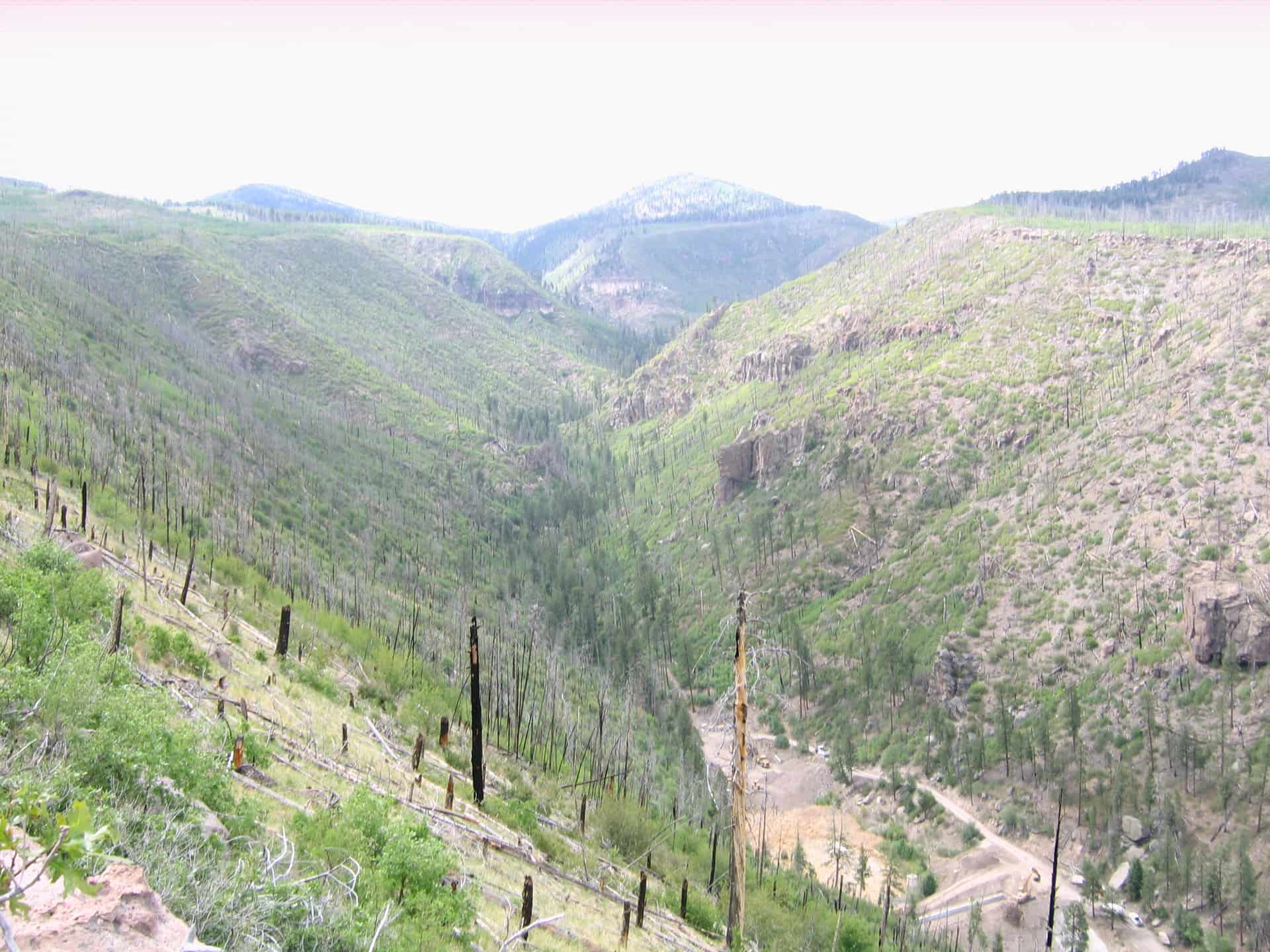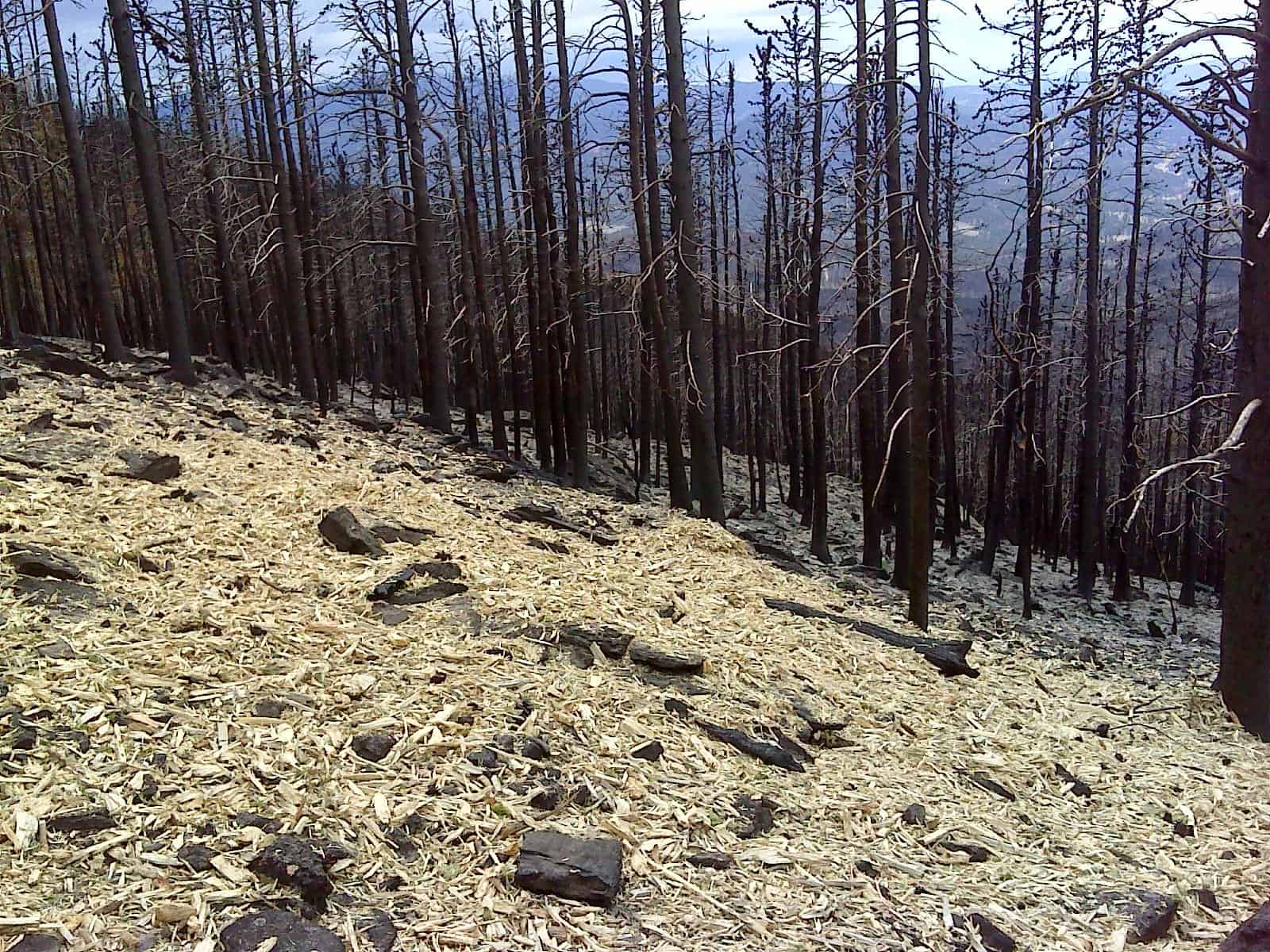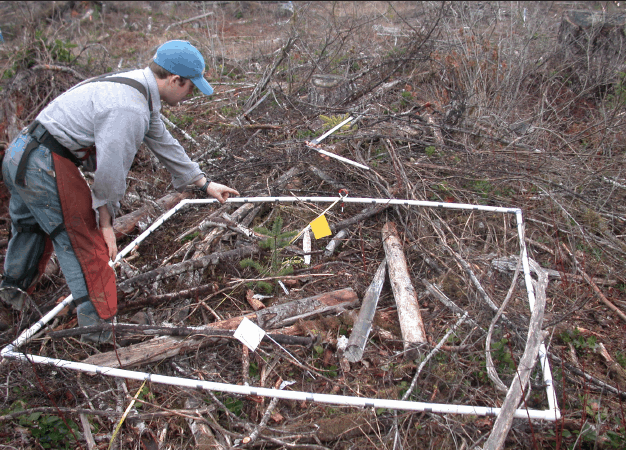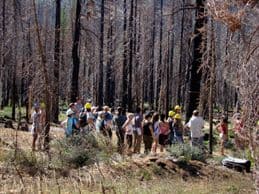As interesting as Guerin’s original article was, perhaps even just as interesting has been the discussion taking place in the comments section to the article – a discussion that includes some of the leading fire scientists themselves. Below are some excerpts from the on-line comments section, but the entire comments section is certainly worth a read:
Richard Hutto
Sep 19, 2012 09:02 AM
Swetnam and Brown “…questioned how ponderosa pines could regenerate if Baker and Williams are correct about severe fires having scarred Western landscapes for generations.” They regenerate the same way most wingless pine seeds do–by animal dispersal. I have numerous photos of Clark’s nutcrackers and Mexican jays extracting seeds from cones on severely burned ponderosa pines (see photo evidence on our facebook page here: http://www.facebook.com/AvianScienceCenter). The more you learn about severe-fire ecology, the more it all makes sense–plant, beetle, and bird adaptations that are apparent even in many of our dry mixed-conifer forest types!
————
Chad Hanson
Sep 22, 2012 12:54 PM
In the artice Malcolm North incorrectly states that the General Land Office data used by Williams and Baker is a “very scant data set” that does not allow for extrapolation to the landscape scale. In fact, this GLO data comprises thousands of sites over entire landscapes. The data used by Williams and Baker, in fact, is by far the largest data set ever used to address the historic occurrence of high-severity fire in ponderosa pine and mixed-conifer forests. As for the comments by Swetnam and Brown, who imply that ponderosa pine and mixed-conifer forest does not naturally regenerate after high-severity fire, this assumption is contradicted by the scientific literature. Savage and Mast (2005) (Table 3) found hundreds of stems per hectare of natural regeneration following high-severity fire in Southwest ponderosa pine forest. Haire and McGarigal (2008) and Haire and McGarigal (2010) had similar findings, indicating substantial natural regeneration of ponderosa pine and other tree species even in large high-severity fire patches, especially within about 200 meters from the edge of high-severity fire patches (which accounts for most of the area experiencing high-severity fire), and lower but still significant levels (for the purposes of establishing new forest stands) even farther than 200 meters into high-severity fire patches. Similar results have been reported outside of the Southwest in mixed-conifer and ponderosa pine forests (Donato et al. 2006, Shatford et al. 2007, Donato et al. 2009, Collins et al. 2011 [Plumas Lassen Study 2010 Annual Report]). There are likely numerous mechanisms for this, including seed survival (which may occur more often that some assume), dispersal by animals, and dispersal by wind.
————
Peter Brown
Sep 25, 2012 02:34 PM
Hey, all I know is what the photo above shows: recent high severity fires in Front Range ponderosa pine forests are not coming back as dense even-aged stands of trees. Far from it, in fact. That photo was taken this past June, almost 10 yrs to the day after Hayman took out about 50,000 acres of forest with nary a living tree left. You could search for days for a seedling that was not planted by either FS and Denver Water (they’ve planted a few 1000s of acres, but still a lot of treeless landscape out there). Maybe those corvids are busy as bees somewhere, but they’re not having much luck with re-establishing those 50,000 acres very fast. And it’s not just Hayman; wander around in any recent fires in the Front Range and see how treeless those areas still are.
And this is in the exact same area we reconstructed fire history before the fire (published in 1999) that was the first fire history in a ponderosa ecosystem that provided concrete evidence of crown fire. But the crown fire patches we reconstructed were acres to 10s of acres in size, not the 1000s to 10000s of acres we’re seeing today.
And hence the crux of the question: what was the scale of crown fire relative to surface fire in the historical forest, and how has that changed today? No one disputes that *passive* crown fires occurred (where fire spread across the landscape was primarily through surface fuels, but occasional trees or patches or trees would crown), whereas current fires are dominated by *active* crown fires (with fire spread mainly through aerial fuels). One other point about the uncharacteristic nature of recent fires, at least Hayman: 400-600 yr old trees we sampled in our 1999 study that had recorded multiple fire scars (i.e., had experienced 6, 8, 10, 15 *surface fires* in their lifetimes) all died during Hayman. Hanson, I have to laugh every time I see your report on “the myth of catastrophic fire” [link here, added by MK] because in the cover photograph there is what looks to be a dead tree that takes up the entire left side of the photo, with what sure looks to be a catface with maybe 8-10 fire scars recorded in it. An incredibly unintended ironic comment on your entire thesis in that paper. Here’s a tree that experienced 8-10 surface fires in its lifetime, and then dies in a recent high-severity fire.
————
Richard Hutto
Sep 25, 2012 02:54 PM
The picture above is indeed instructive; it shows that there are no big ponderosa pines! Why? They were all harvested before or after the severe fire event…might that have something to do with the fact that there is little recruitment? The more unnatural treatment a forest gets, the more unnatural the result.
The fact that charcoal trees have fire-scars is also instructive. Of course fire-scarred trees eventually burn down…that’s the point! If they didn’t burn down every 300 years or so, on average, they’d live 4,000-5,000 years, just as the other tree species that REALLY have a history of avoiding severe fire do. A little more perspective from evolutionary ecology might help here.
Again, nobody is arguing that some dry PIPO forests are in an unnatural state, and getting unnatural results from recent fires…the BIG point is that the story applies to a small proportion of western forests, and to almost none of the mixed-conifer forest types.









